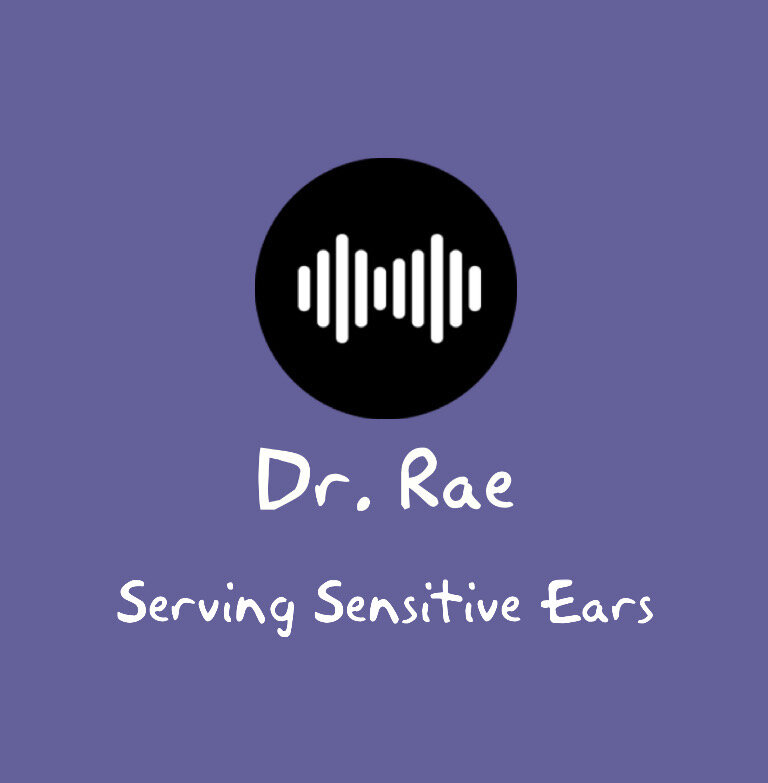Salon Summary: July 30, 2025
Patient–Professional Connections
Hosted by Dr. Rae Stout | www.drraestout.com
This week’s salon brought together a powerful cross-section of lived and professional experience:
Autistic adults and ADHDers
An audiologist, a psychologist, and a speech-language pathologist
Parents of kids and adults with misophonia
Adults with chronic illness and trauma survivors
Service dog handlers and neurodivergent professionals
Some attendees wore many of those labels. Others were still figuring it out.
Themes and Insights
Masking, Exhaustion, and the Cost of Visibility
We opened with a striking metaphor:
“Masking is like a water balloon getting tighter and tighter until someone touches you and you burst.”
That line came up more than once. Many of us know what it means to keep calm on the outside while drowning inside.
How people with Tourette's Syndrome can either mask or suppress tics
How people with neurodivergences and disabiltities hide overwhelm
The stress of appearing calm when our bodies are flooded with stress
People shared what it's like to begin unmasking in adulthood. There was relief, but also real risk. One participant said they were accused of being “too disabled to be credible” after writing openly about autism and misophonia. But neurodivergent readers finally felt seen. The judgment didn’t come from clinical work. It came from telling the truth.
Unmasking is not equally safe for everyone.
Participants of color shared that dropping their mask carries added danger—socially, professionally, and even physically
One person almost lost their driver’s license because their autistic eye contact didn’t look “normal”
The deeper issue: People are judged by what others can see. Rarely by what they are experiencing.
Misophonia, Hyperacusis, and Tinnitus Are Not Side Notes
These conditions were part of the main conversation, not footnotes.
Participants described how these sound sensitivities affect self-regulation, sleep, eating, and relationships
One person shared that misophonia contributed to self-injury as a teen
Others talked about the trauma that builds when someone is punished for reacting to a sensory trigger
When shame is added to the mix, the result can be emotional isolation.
“The reaction wasn’t the problem. Being judged for it was.”
This same theme came up with other involuntary responses, not just sound sensitivities.
PDA (Pathological Demand Avoidance)
This became a central thread of the evening.
PDA was described as a nervous system shutdown in response to daily tasks like brushing teeth or leaving the house
It’s not defiance
It’s about survival when control feels impossible
Several people shared that their PDA traits were missed for years.
Some were seen as difficult
Some were praised for being high-achieving, while silently panicking inside
Traditional reward systems often made things worse
What helps instead:
Collaboration instead of control
Curiosity instead of consequence
Freedom instead of force
Auditory Processing and Listening Fatigue
Dr. Rae talked about how people with normal hearing on paper can still struggle every day.
The issue isn’t just hearing, but sorting relevant sounds from irrelevant ones
This effort creates exhaustion, especially in noisy or unpredictable spaces
Low-gain hearing aids came up as one helpful tool.
Not a fix. Not just for hearing loss.
They stabilize sound input and reduce constant mental load
One participant compared them to sunglasses for someone with light sensitivity
“They don’t cure the issue. They make the world more livable.”
Service Dogs as Emotional Anchors
These dogs are more than mobility aids. They support emotional regulation and safety.
One participant said their dog can tell when they’re overwhelmed before they even notice it themselves
Others described the stress of public situations where people don’t understand what service dogs actually do
There is still a lack of consistent protocol, even in medical and emergency settings.
What Made This Salon Feel Different
Nobody had to prove they were an expert
Everyone asked and answered questions
Professionals spoke about their own disabilities and neurodivergences
Patients offered insight
Parents and patients were heard
The tone was open. The structure was soft. The honesty was sharp.
People showed up overstimulated, grieving, hopeful, unsure. And that was enough.
“You’re not too broken to be here. You are here. That’s enough.”
“We’re not recording and taking notes for charts. We’re taking notes for each other, for anyone who missed this chat.”
Join Us
Zoom link shared weekly at www.drraestout.com
No preparation needed. Come exactly as you are.
For reflections and related topics, visit www.drraestout.com/blog
__________________________________________________
Dr. Rae LLC is inviting you to a scheduled Zoom meeting.
Topic: Patient-Professional Connections Salon
Next Meeting Time: Talk is at Aug 8, 2025 08:00 PM EST (US/Canada) - ASL Hour Starts at 07:00 PM
After That: Talk is at August 12, 2025 03:30 PM EST (US/Canada) - 7:30 UK Summer Time - ASL Hour Starts at 02:30
Join Zoom Meeting
https://us02web.zoom.us/j/2563645754?omn=83396361039
Meeting ID: 256 364 5754
---
One tap mobile
+13017158592,,2563645754# US (Washington DC)
+13092053325,,2563645754# US
---
Dial by your location
• +1 301 715 8592 US (Washington DC)
• +1 309 205 3325 US
• +1 312 626 6799 US (Chicago)
• +1 646 931 3860 US
• +1 929 205 6099 US (New York)
• +1 305 224 1968 US
• +1 253 215 8782 US (Tacoma)
• +1 346 248 7799 US (Houston)
• +1 360 209 5623 US
• +1 386 347 5053 US
• +1 507 473 4847 US
• +1 564 217 2000 US
• +1 669 444 9171 US
• +1 669 900 6833 US (San Jose)
• +1 689 278 1000 US
• +1 719 359 4580 US
• +1 253 205 0468 US
Meeting ID: 256 364 5754
Find your local number: https://us02web.zoom.us/u/kbq9HCZC10
